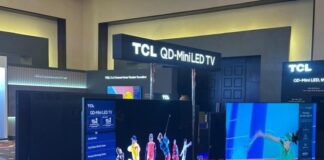… Not repair and replace models
Accidents do happen and insurers are in the business to pay claims when insured events happen. Insureds expect their insurers to make good on that promise stated in the insurance contract. This has led to a ‘repair and replace’ mentality between the two parties. But what if, with the help of a high quality geospatial intelligence, that paradigm is to change to a ‘predict and prevent’ model. Rather than being reactive, the role of insurers can be proactive. That can turn the insurance paradigm and allow the insurer-insured dynamic into a trusted partnership in managing risk.
The ability to predict everything is very exciting but reality demonstrates that not everything can be measured since there are always new risks emerging. The coronavirus pandemic has been an example of this. As a result of going through this crisis, and having had to work from home, companies have had to place an even greater focus on cybersecurity. The fact that insurers manage so much clients’ personal data across a distance has required that everyone reinforce methods to avoid potential cyber risks. There will always be new risks that come up that will force prepared companies to adapt and design products and services that satisfy the potential needs of clients. “The insurance industry should take advantage this moment of social changes, and use the power of information and data to accelerate the pace of its digital transformation and achieve real personalisation according to the emerging needs of consumers” – Chubb’s Chief Digital Officer, Sean Ringsted.
Insurance businesses have always been centred on policies, and many of the infrastructures and internal strategies are designed around them and their administrative processes. The transition toward digitalisation that is taking place in the banking sector should also evolve in the insurance industry. Some insurers are trying by introducing mobiles apps and online portals. Nevertheless, the pace is still slow. It can be increased until a proposal is tailored to suit the individual needs of each client.
Using technology as predict and prevent model
In Ghana, almost all insurers quote and underwrite policies without conducting physical inspections. For the insurance industry to achieve differential values for consumers, it is key to count on historical data and with aggregated information that allows insurers to evolve their traditional business model based on repair and replace with a model of ‘predict and prevent’. In this process, the use of technologies such as the Internet of Things and sensors in homes as much as in insured buildings will also be fundamental because they will help locate where damage tends to occur before it does. The sector can use IoT technology to change its traditional model of ‘repair and replace’ to ‘predict and prevent’. There should be a major shift which can ultimately change the paradigm of risk management practices among insurers.
Unlike other financial service products, an insurer sells an insurance policy and a customer buys a policy, and both parties hope that nothing bad happens. Using the insurance policy indicates there has been an accident or loss. That is the case when the insurance model is one of ‘repair and replace’. Insurance premiums in this traditional model are based on historical data. Underwriters and actuaries use past data sets to look for loss patterns and make projections about future outcomes. Digital innovation in such a model is largely limited to making the purchase and claims process easier.
But what if technology is able to radically change the insurance model itself? What if the insurance industry is able to predict and prevent losses from happening, and become a force for good, rather than just reimburse for losses and damages? Such a shift can be a holistic one as it would not only benefit the insurance industry, but society at large. The advent of connected devices and powerful analytics using convolutional neural networks and artificial intelligence can open the door for insurance companies to innovate to ‘smart policies’. Emerging data sources should be leveraged to provide a continuously updated view of underlying risks. Insurance companies can make dynamic projections about future outcomes and develop consumption based pricing models that are calculated based on this new approach.
Personal lines, especially car insurance, are yet to be fully impacted by technology and digitisation in the Ghanaian insurance industry. The gradual adoption is being driven by few insurance companies wanting to ‘increase profitability’ and those who want to respect ‘social distance’ in this era of pandemic. In advanced economies, telematics is being used largely to focus on young drivers and people with poor claims history. These categories of people are perceived as a ‘bad risk’. Insurers in advanced economies are using telematics in vehicles to detect driving behaviours, patterns and nature of accident. These had helped them to design motor policies and set prices with the aim to predict, minimise or prevent vehicular accidents. Ghana’s insurance industry is rather focusing on the wrong metric – price. Instead of local insurers to use price as a model to predict and prevent loss or damage, they are rather using it as a tool to repair and replace. This is as a result of the nature of the unhealthy competition among the insurers, and also the objective of meeting financial targets set.
Using price as predict and prevent model
Insurers have to come to a point where they can design insurance policies that can help prevent accidents, not merely paying claims. This will require both the regulator and companies to move away from their existing insurance models, and adopt a dynamic risk-based pricing. For example, insurers can design motor policies that shifts in price based on driver data feed. Data that provides insights about not just when, what distance and where a driver drives, but how they drive. Insights that improve driving habits, and promote safety for everyone on the road. Motor policies and premiums should be influenced by the number of accidents a driver had, or is arrested by the police for over speeding, or for a journey where they were consciously breaking speed limits and traffic regulations. I know most drivers and vehicle owners would not be happy when premiums are increased. Others would resort to fake motor insurances. After all, ‘No Claim Discounts’ are no longer offered on motor third party insurance.
The regulator can redesign the Motor Insurance Database (MID) in a way where insurers can upload motor claims registered. This will help all insurers to have access to all motor claims that will guide them in their pricing. When accidents do happen, associated data feeds will not just automate claim adjudication and payments, but also prevent fraud. The National Insurance Commission and insurers need to change their focus to the right metric – prevention and not repair. This can be done through establishing a common platform, like the MID, where all insurers can update their claims documents with insured’s names, the driver’s name, vehicle registration numbers, drivers’ licences and Ghana Card numbers for insurers to be able to determine claim history or records, quote prices, underwrite policies and make recommendations for insureds.
There should be a change in mindset from ‘Repair and Replace’ to ‘Predict and Prevent’. So what does this change in mindset mean, and how can it be seen in the ways that insurance companies interact with their insureds? Simply put, ‘Repair and Replace’ is a reactive approach to insurance in which insurers only interact with their policy holders at the time when a claim occurs. With ‘Predict and Prevent’ approach, insurers can take advantage of every opportunity to engage proactively with their insured. In some cases, this means providing smart devices that monitor changes in a property’s condition, and warn homeowners when they are at elevated risk. In other cases, physical inspections and risk surveys should be done regularly, and at every policy renewal. Regular inspections by risk and survey officers can help offer risk management recommendations for both insurers and clients to take proactive steps to address potential risk. In this way, the insured gets a better quote, the insurer avoids paying out losses in the future, and both parties can have a more positive, trust-based experience.
References
https://opinno.com/insights/insurers-must-shift-model-predict-and-prevent
Gideon is an experienced underwriter who works with Activa International Insurance. Email Address: [email protected]/ [email protected]
Contact: 0246972495 / 0555864286










